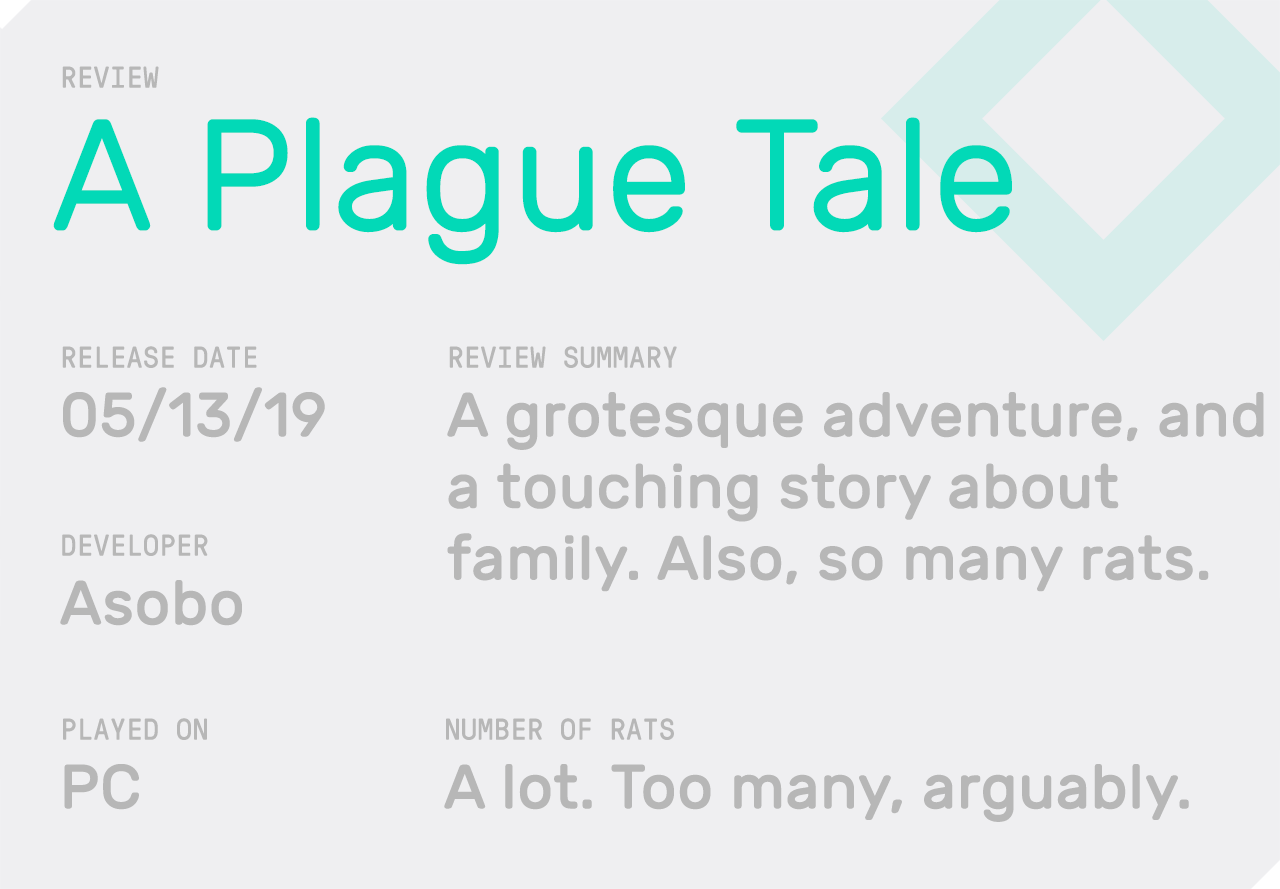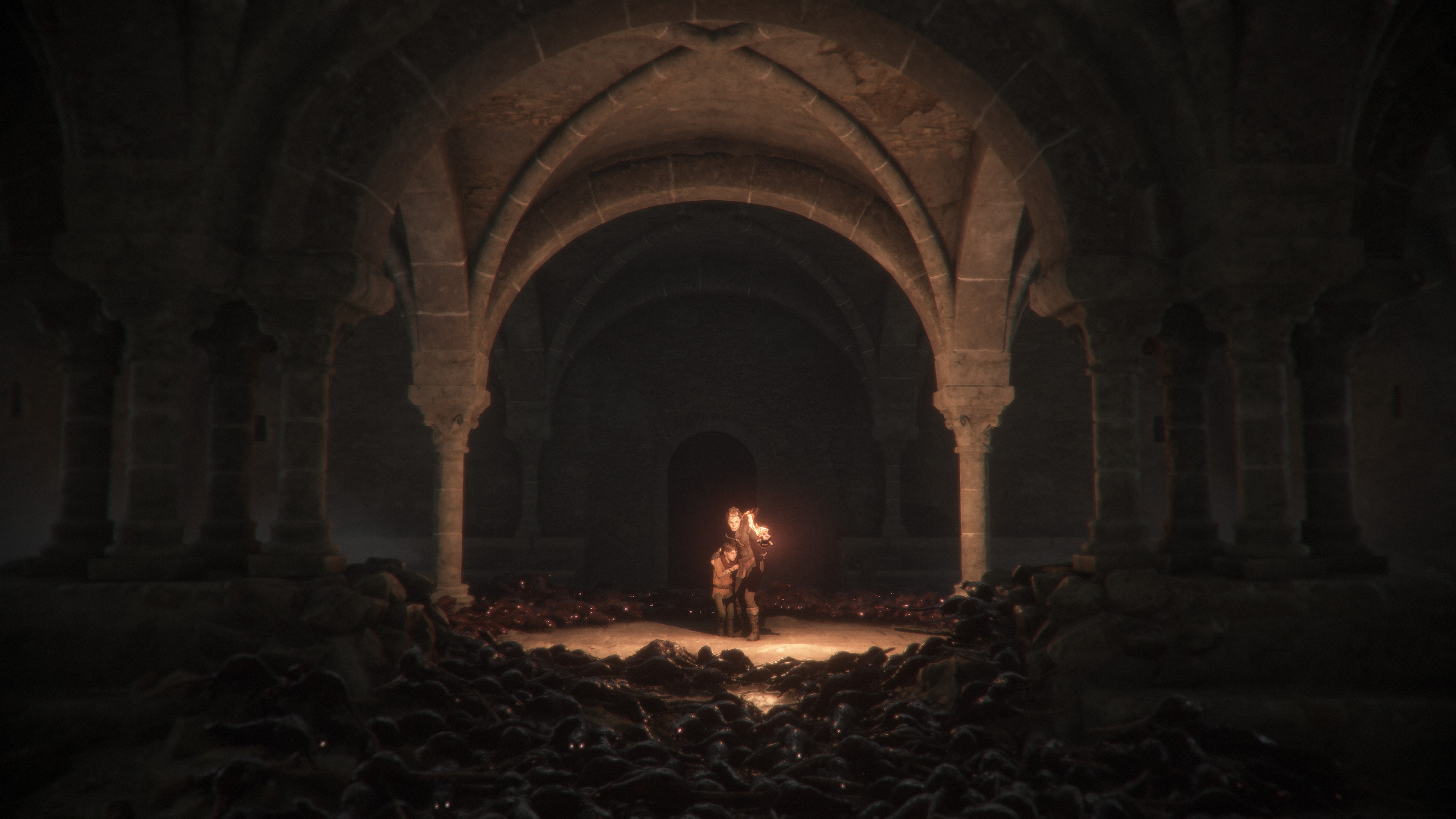The Grotesque ‘A Plague Tale’ Has a Great Story (And Too Many Rats)
Credit to Author: Patrick Klepek| Date: Tue, 21 May 2019 15:10:15 +0000
As I guide a young girl and her sick, fear-stricken brother across a war-torn battlefield, my stomach churns. The stinking rot of flesh haunts my screen. How many died at the hands of one another? How many others died because of the relentless, skin-chewing rats that have apocalyptically infested this world? All that matters is that you keep moving. If you keep moving, maybe the rats will find another target. The bodies are stacked to such a point that it’s impossible to progress without using a corpse as a stepping stone. Squish, squish, squish.
A Plague Tale: Innocence is a grotesque game, but a beautiful one. It’s not a great stealth game, but a serviceable one carried by the adventure that surrounds it. The “game” part is the weakest element, but the story—and more specifically, the main characters—picks up the slack. It’s arguably 2019’s Vampyr, a compromised game with grand, unachieved ambitions, yet one that, based on what it does pull off, is absolutely worth your time. It’s a game that knows its strengths and weaknesses, and succeeds because of this knowledge.
The game follows a perilous attempt at survival by Amicia and Hugo, the privileged children of local nobles, people shielded from a deadly truth that’s been slowly tearing apart the world outside their tall walls. Seemingly overnight, an army of plague-carrying rats appeared. It began, as things often do, quietly, and amongst society’s most vulnerable. There were whispers of “the bite,” an infectious disease that takes hold after being tagged by a rat with the affliction. Soldiers eventually come for the family, claiming Hugo is, for some reason, special. Their mother ushers them out the backdoor, points them in the direction of help, and quickly, Amicia and Hugo are confronting a terrifying world where a target’s on their back.
You’re weak in A Plague Tale. Not in spirit, mind you—both Amicia and Hugo show remarkable fortitude in the face of devastating hardship—but this is a world where the deck is stacked. Soldiers have bulky armor, wielding enormous swords. There are no health meters—if struck, you die. And even when no one’s stalking you, there are the rats. There are always rats. Not a few, or even a few dozen, but thousands, often tens of thousands squirming across cramped city streets and blood-covered battlefields. It’s as if someone fell asleep on a copy-and-paste tool. The framerate often chugs at the sheer volume, a fact that would be humorous if those beady eyes and incessant chatter weren’t so damn creepy.

Weak does not mean helpless, however. Amicia carries a sling is capable of flinging rocks at a soldier who, for a brief moment, forgot to put on their helmet. It can interact with the world in a variety of ways, too, from breaking locks to causing a convenient noise to distract a guard. Over time, she learns all manner of alchemic tricks, letting her conjure potions to both create and put out fire (useful for dealing with rats, whose primary fear is fire), put enemies to sleep, trick rats into running to a specific location, and more. It quickly becomes a versatile toolset.
You, like me, might start envisioning a crafty stealth game where the game drops you into open-ended locations where said toolset allows the player to engage with situations in a variety of ways. What you quickly discover is A Plague Tale is not this game. It’s more akin to playing a Telltale adventure game with button prompts for action moments. Almost universally, every situation has a comically obvious solution, usually related to whatever item the game last unlocked for you, or whatever object is brightly shining in front of you, begging to be interacted with. There are upgrades, but they are wholly unnecessary. You can try different solutions to a problem, but you’re wasting creative energy that could be used on literally anything else in your life. A Plague Tale does not demand much from the player, and the faster you set expectations accordingly, the better. Which isn’t to say these parts of the game outright bad, they’re perfunctory—a brief, interactive set piece in-between story beats.
Yet even these stealth sections, as scripted as they might feel, have their moments.. Take this bit: You walk into a room with nothing but rats and a corpse quietly swaying from the rafters. A quick snap of your sling and the corpse hits the ground, funnelling the rats towards fresh flesh, but also inviting the curious eyes of a soldier carrying a lantern to keep the rodents at by. But with yet another quick snap, that lantern goes out, and the rats scurry towards their second helping. I couldn’t help but start openly laughing, even as the man used his final breaths to scream.
This dynamic, gallows humor included, works because the rest of A Plague Tale is so great.
For one, the story doesn’t overplay its hand, lasting a little under 10 hours. In that time, the game sticks to its strengths, and spends much of its time establishing and reinforcing the complicated but sincere relationship between Amicia and Hugo, a brother and sister whose newfound admiration is forged through their upsetting journey. The voice acting isn’t revelatory, but it won’t distract. It, like so much of A Plague Tale, does what it needs to do, which is why the game so regularly impresses. (Your younger brother never gets in the way, either. There are times when you need to travel together, but if you fail a sequence, it won’t be his fault.)

And gosh, every scene is like moving through a beautifully ugly painting. The spectacle of death fuels the game’s elaborate, grotesque imagery, and the game makes you slowly appreciate it—admire it, even. It’s not exploitative of that imagery, though. Given the premise, it’s remarkably restrained about what it actually shows, deftly relying on letting one’s imagination fill in the gaps. Don’t get me wrong; it’s definitely gross, full of moments intentionally meant to leave players squirming and peeking at the screen through closed eyes, but it could have gone a lot further for spectacle sake. What’s there services the story.
A Plague Tale is largely driven by your buy-in on Hugo and Amicia as brother and sister, and while that part works, the larger story is messy. It gestures at a more interesting tale, a critique of wealth and privilege through the eyes of someone forced into experiencing life from the bottom, after a lifetime in gleeful ignorance. Instead, it quickly tosses those themes overboard and falls back on a reliable set of supernatural tropes. It’s probably unsurprising the story goes off the rails at the same moment the gameplay does, suddenly ditching its fine-but-not-great stealth mechanics for an action game it’s woefully unprepared to deliver.
Still, A Plague Tale is an unexpected surprise during a quiet period in games. Not everyone will stomach the imagery it’s playing with, but for those who find themselves taken by the places A Plague Tale wants to go will be rewarded with a satisfying, strange adventure.
Follow Patrick on Twitter. If you have any suggestions for games that also deal with creepy rats, drop him an email: patrick.klepek@vice.com. He’s also available privately on Signal.
Have thoughts? Swing by the Waypoint forums to share them!
This article originally appeared on VICE US.